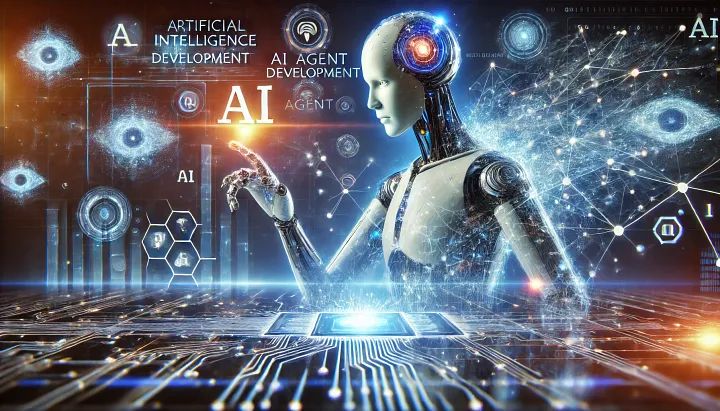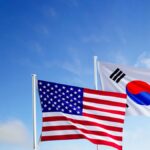Table of Contents
As the United States races to secure its position at the forefront of the global artificial intelligence (AI) revolution, it faces a hidden but critical constraint: the nation’s aging and overburdened electricity grid. Meanwhile, nearly 3,000 miles to the south, Brazil has quietly positioned itself as an AI-ready nation powered by clean, renewable energy. The convergence of these two realities presents an opportunity for the U.S. to not only address its own energy challenges but also solidify its influence in the fast-evolving field of AI. U.S.-Brazil cooperation could be the key to addressing the growing power constraints in the U.S. while ensuring that America remains competitive in the global AI race.

Brazil’s Clean Energy Advantage for AI Development
Brazil’s energy landscape offers a stark contrast to the United States. With 93.6 percent of its electricity generated from renewable sources, Brazil is one of the world leaders in clean energy, thanks in large part to its massive hydropower infrastructure. The country’s extensive water resources—representing nearly one-fifth of the world’s total—serve as a crucial driver for both energy production and AI cooling needs. Cooling servers, which are vital for running AI systems, requires significant amounts of water, and Brazil’s hydropower resources provide a reliable and sustainable solution.
This renewable energy advantage has not gone unnoticed. Major American tech companies such as Microsoft and Amazon are investing heavily in Brazil. Microsoft has committed $2.4 billion to expand its cloud and AI infrastructure in the country, while Amazon Web Services (AWS) is investing $1.8 billion through 2034. Additionally, the Brazilian government is actively investing in AI initiatives, including $3.8 billion through 2028 for projects in sectors like education, Amazon deforestation monitoring, and the development of Portuguese language models.
Yet, Brazil isn’t relying solely on American partnerships. At the 2024 G20 Summit, Brazil signed 37 memorandums of understanding with China, including agreements for joint AI laboratories and semiconductor development, further solidifying its role as a global AI player.

U.S. Power Grid Strains Under Growing Demand
In stark contrast, the U.S. power grid is struggling to meet the growing demand for electricity. As Microsoft, Google, and other tech giants expand their AI data centers across the United States, the aging grid faces significant reliability constraints and blackout risks. This has led to creative—yet costly—solutions, such as Microsoft’s partnership to restart the Three Mile Island nuclear plant and Google’s collaboration with Kairos to build new nuclear reactors.
These steps highlight the growing energy crisis in the U.S. and the need for alternative energy sources to support the rapid expansion of the AI industry. Brazil, with its abundant renewable energy and ability to produce large-scale clean electricity, offers a viable solution for AI infrastructure in the U.S. By leveraging Brazil’s renewable energy resources, the U.S. could ease the burden on its domestic grid while ensuring the sustainability of its AI-driven innovation.

A Strategic Opportunity for U.S.-Brazil AI Cooperation
For the U.S., the path forward lies in enhancing its AI diplomacy with Brazil. As Brazil continues to develop its AI and tech capabilities, the United States has a unique opportunity to secure a strategic partnership that benefits both nations. This partnership would provide U.S. companies with access to sustainable computing infrastructure while alleviating domestic power constraints. To achieve this, the U.S. could:
- Establish a Bilateral AI Innovation Hub: Modeled after Brazil’s “AI City”, such a hub would foster collaboration between U.S. tech companies and Brazilian innovators, leveraging American semiconductor technology in exchange for Brazil’s clean energy resources. This mutually beneficial arrangement would create a new AI ecosystem powered by Brazil’s renewable energy.
- Elevate Diplomatic Engagement on AI: Brazil, already a Major Non-NATO Ally to the U.S., should be elevated in terms of official diplomatic engagement on AI. This could include coordination between the State Department, Department of Energy, and Department of Commerce to ensure that Brazil becomes a key partner in the global AI race—especially at a time when China is actively courting Brazil with technology partnerships of its own.
By elevating Brazil to a central role in its AI strategy, the U.S. could help shape the future of global AI infrastructure, ensuring that it maintains a competitive edge over China and other rising tech powers.

Geopolitical and Economic Implications
The U.S.-Brazil AI cooperation also carries significant geopolitical weight. Brazil is already becoming a key player in Latin America’s technology landscape, and the U.S. must act quickly to prevent China from further deepening its influence in the region. China has already established significant ties with Brazil through the Belt and Road Initiative and its ongoing AI and semiconductor collaborations. Without a strategic U.S. response, Brazil may lean more heavily towards Chinese partnerships, complicating the U.S. supply chains and creating additional security concerns.
Moreover, the economic impact of Brazil’s $5.96 billion data center market projected by 2029 will be significant, regardless of whether the U.S. is directly involved. If the United States fails to collaborate, it risks missing out on the opportunity to help shape this market, losing the ability to influence the direction of Latin American tech development.

Conclusion: The Flow of Opportunities
The potential for U.S.-Brazil cooperation in the field of AI and biotechnology is enormous. Brazil’s renewable energy resources, combined with its growing tech ecosystem, offer the U.S. a unique opportunity to secure AI infrastructure while alleviating the strains on the American power grid. But to harness this opportunity, the U.S. must act swiftly and decisively to foster a partnership with Brazil that balances tech diplomacy, energy collaboration, and innovation leadership.
By acting now, the United States can ensure that it remains at the forefront of the AI revolution while maintaining its influence in Latin America and ensuring that its national security and technological future are secured. As the report from the National Security Commission on Emerging Biotechnology warns, the time to act is now—otherwise, the U.S. risks watching from the sidelines as the AI and biotechnology race accelerates.
Author Profile
- Syed Tahir Abbas is a Master's student at Southwest University, Chongqing, specializing in international relations and sustainable development. His research focuses on U.S.-China diplomacy, global geopolitics, and the role of education in shaping international policies. Syed has contributed to academic discussions on political dynamics, economic growth, and sustainable energy, aiming to offer fresh insights into global affairs.
Latest entries
 Japanese PoliticsSeptember 6, 2025Prince Hisahito’s Coming-of-Age and Japan’s Male-Only Succession Dilemma
Japanese PoliticsSeptember 6, 2025Prince Hisahito’s Coming-of-Age and Japan’s Male-Only Succession Dilemma GeopoliticsAugust 23, 2025Previewing the White House Visit of South Korean President Lee Jae Myung
GeopoliticsAugust 23, 2025Previewing the White House Visit of South Korean President Lee Jae Myung Middle East ConflictJuly 22, 2025Israel’s Deadly Attacks on Gaza: A Dire Humanitarian Crisis and International Calls for a Truce
Middle East ConflictJuly 22, 2025Israel’s Deadly Attacks on Gaza: A Dire Humanitarian Crisis and International Calls for a Truce Middle East & North AfricaJuly 20, 2025Israel Targets Damascus Amid Rising Tensions in Syria
Middle East & North AfricaJuly 20, 2025Israel Targets Damascus Amid Rising Tensions in Syria


